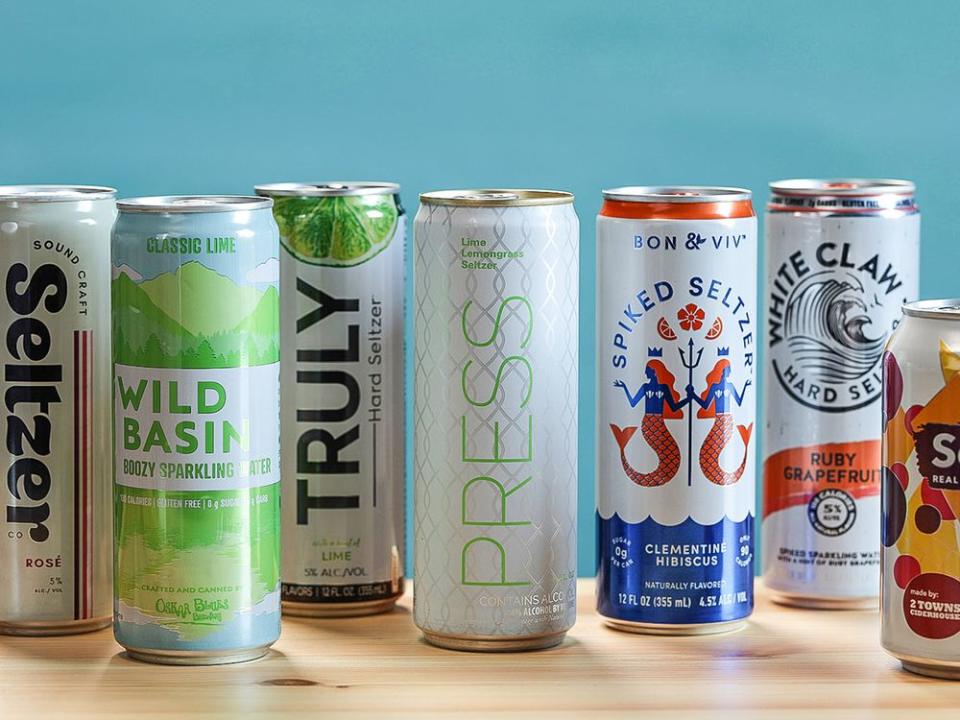TIME's Person of the Year Should Be Hard Seltzer
The past year brought America meatless Impossible Whoppers, chicken sandwich wars, and Scotch whiskey served in what are essentially Tide Pods. But there's a strong case to be made that 2019 was the year of hard seltzer.
Personally, after spending the first part of the year abroad, I was back in the States in April, eager to try this emerging drink I'd heard so much about. Even then, I got plenty of odd looks from friends when I was constantly grabbing cans of boozy sparkling water. But by summer, the cat was out of the bag—with White Claw especially being the on-trend beverage for any party. Not only were the odd looks gone, but many of my friends had picked up a hard seltzer habit themselves.

So just how far and how fast have hard seltzer's fortunes changed? IWSR Drinks Market Analysis has just come out with its Hard Seltzer Report and many of the stats are mindboggling. "The meteoric rise of the hard seltzer category across the US beverage alcohol industry has been nothing short of phenomenal," the company begins, before forecasting that "consumer interest in these products will only continue to grow." It's already crossed some pretty incredible benchmarks. An IWSR survey found that over half of all American alcohol consumers drink hard seltzer at least once a week. Think about that: Over half of the people in America who drink any kind of alcohol—be it beer or wine or cocktails—say they are now drinking hard seltzer on a weekly basis.
With that in mind, it's perhaps less surprising to hear but still notable that, by volume, more hard seltzer is being sold in the U.S. than vodka, which is America's top-selling spirit. That means hard seltzer is now outselling every single liquor category. Granted, hard seltzer is far lower in ABV than vodka, so "by volume" isn't the best comparison, but still, this time last year, people barely seemed to know that hard seltzer existed. (At Food & Wine, we went from mentioning it once in 2018 to over a dozen times this year.)
Speaking of which, IWSR writes, "Hard seltzer and other 'seltzer-like' products command a market share of 2.6 percent of all beverage alcohol in the US, up from only 0.85 percent a year ago"—meaning hard seltzer sales have tripled in the past year. In total, IWSR pegs the current hard seltzer market at about 82.5 million cases.
Of course, the question now is whether this is all a fad or whether hard seltzer is here to stay. IWSR believes there's still plenty of growth left to be had, writing that their analysis shows hard seltzer sales will triple again by 2023. "Hard seltzers are far from a fad, they're growing at a spectacular rate, and increasingly, hard seltzer producers are pulling consumers from other beverage alcohol categories, not just beer," Brandy Rand, COO of the Americas at IWSR Drinks Market Analysis, explained. "Combined, hard seltzers and other canned seltzer-like products (vodka soda, as an example) will drive the total ready-to-drink category, making it the fastest-growing beverage alcohol category in the US over the next five years."
So why do people like hard seltzer? IWSR sums that up in one word—"refreshment"—which the survey found was the top attribute drinkers cited when asked why the beverage appealed to them. "The rise of hard seltzers shows there was a segment of consumers underserved by the current beverage alcohol market who were looking for alternatives that were refreshing and flavorful, but also low-calorie and low-sugar," Rand continued. It turns out people had a lot of refreshing to do this year.

